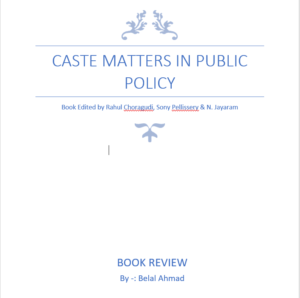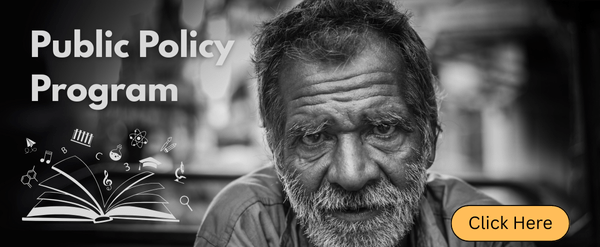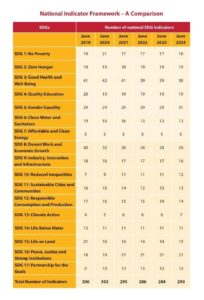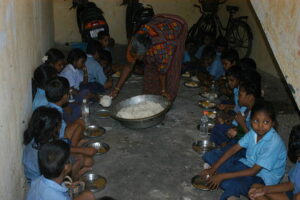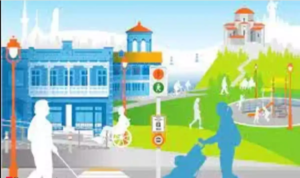Designing Gender-Inclusive Public Spaces: Lessons from Indian Cities Anmol Yadav, Divyasri SN & Nandini Singh 1. Objective of the study By Anmol Yadav The goal of the study is to investigate the design features and strategy that help Indian cities construct public areas that are gender inclusive. Public spaces are essential to urban life providing locations for social exchange, recreation, and community building. Yet, often these areas fall flat to meet needs of genders, resulting in accessibility and safety disparities. Goal of this research is to investigate these disparities and offer practical solutions that encourage inclusivity fostering secure surroundings for all, irrespective of gender. Need of the hour is to have well-designed public places in areas that are rapidly-urbanizing, such as India. Public areas are crucial for promotion of community cohesion being centers of social and economic activity. However, still major Indian cities suffer from outdated infrastructure, poor public facilities, and hazardous surroundings, making it difficult for people of different genders to benefit from these places to their full potential. Public areas are crucial to urban life giving people a place to congregate, socialize, and participate in activities that foster social inclusion and well-being, while accelerating people’s social, emotional, and physical well-being by providing chances for leisure, community development, and cross-cultural interaction. Additionally, they act as key touchpoints for civic involvement and participation promoting sustainable ecosystems. Despite their importance, women and transgender people, find public areas in Indian cities to be precarious and inhospitable. Issues like violence, harassment, poor illumination, restricted access to sanitary and secure facilities, and poorly designed pedestrian walkways act as barriers to equal access leading to unequal experiences in public places, where many people areunable to fully participate. 2. Understanding Gender-Inclusive Public Spaces By Anmol Yadav Understanding that different people have varying requirements, preferences, and experiences depending on their gender, gender-inclusive public spaces are created. The goal of these areas is to ensure that regardless of gender, everyone feels appreciated, safe, and at ease. Gender inclusion can only said to be incorporated when basic necessities like lighting, access, sanitation, mobility serve all genders equally. To achieve the same initiatives like The Safe cities by UN Women and the guidelines established by groups such as Gehl Architects prioritize inclusive development and fair access to urban areas emphasizing significance of including safety into city design while acknowledging varied gender experiences in public spaces. Social concerns like physical and verbal harassment faced by women, poor mobility, lack of CCTV’s, poor pedestrian infrastructure exacerbate gender inequality in infrastructure created in accordance with archaic gender roles. Cities need to build spaces that are not just inviting but also inclusive for everyone by tackling these issues with careful urban design. References: https://atrium.lib.uoguelph.ca/server/api/core/bitstreams/dba30bc0-f755-4ad5-b763-5f7a572f2b09/content https://prism.ucalgary.ca/server/api/core/bitstreams/2fc1f1d5-e7f4-435b-bf41-145fea93ecb6/content https://www.researchgate.net/profile/Dr-Bansal-5/publication/366717443_Assessing_Gender_Inclusive_User_Preferences_A_case_of_Urban_Public_Spaces_in_Chandigarh/links/63c2ab34d7e5841e0bc9ff72/Assessing-Gender-Inclusive-User-Preferences-A-case-of-Urban-Public-Spaces-in-Chandigarh.pdf https://escholarship.org/content/qt4ht60519/qt4ht60519.pdf?t=relm8f&v=lg 3. Evaluating Urban Design Components By Divyasri SN (3.1, 3.2) & Nandini Singh (3.3, 3.4) The quality of living in urban areas is greatly influenced by urban design. Street lighting and public restrooms are two essential components that affect accessibility, inclusivity, and safety in metropolitan areas. Urban environments can become safer and more fair by addressing these issues with creative solutions. 3.1. Lighting on the Streets Current Concerns Street illumination is still insufficient in many Indian cities, especially in the outskirts and in informal settlements. Due to increased susceptibility to crimes like theft and harassment, poor lighting increases safety hazards, particularly for women, children, and vulnerable groups. According to a study by Jagori (2010), one of the main causes of metropolitan women’s feelings of insecurity is poor street illumination. Additionally, the use of antiquated, energy-intensive lighting systems strains municipal budgets and undermines environmental sustainability objectives. Case Studies and Solutions To overcome these obstacles, Indian cities are implementing creative solutions. Mumbai’s Marine Drive, for instance, is a well-lit public area that has improved safety and drawn community involvement. Up to 50% less energy is used in Bengaluru thanks to the installation of motion-activated smart LED lamps (Economic Times, 2022). One example of how renewable energy can promote sustainable urban development is the deployment of solar-powered streetlights in both urban and rural regions. These programs can be expanded nationally to encourage safer and more energy-efficient streets. 3.2. Public restrooms Difficulties In India, public restrooms frequently fall short of accommodating the demands of a variety of people, especially women and transgender people. Accessibility is restricted by a lack of gender-sensitive infrastructure, and this problem is made worse by cultural stigmas. More than 70% of urban women avoid using public restrooms because of safety and hygienic concerns, according to a 2020 Water Aid India research. Inadequate maintenance also leads to unsanitary environments, which raises the risk of illnesses and infections. Recommendations To overcome these challenges, cities like Chennai have introduced gender-neutral public toilets that cater to the needs of all individuals, including transgender people. These facilities not only promote inclusivity but also challenge cultural stigmas associated with public sanitation. Additionally, incorporating self-cleaning mechanisms and touch fewer systems in public toilets can improve hygiene standards. Public awareness campaigns, such as those by the Swachh Bharat Mission, are crucial for encouraging the use of these facilities. Scaling these efforts across cities can create equitable, hygienic urban spaces. 3.3. Condition of Public Transport and Mobility Urban mobility systems are often not designed to account for gender-based differences in mobility patterns. Women are amongst the biggest users of public transport across Indian cities. In general, cities work better for heterosexual, able-bodied, cisgender men than they do for women, girls, sexual and gender minorities, and people with disabilities. Key aspects of the built urban environment – related to access, mobility, safety and freedom from violence, health and hygiene, climate resilience, and security of tenure – create disproportionate burdens for women, girls, and sexual and gender minorities of all ages and abilities, thus exacerbating and reinforcing existing gender inequities. Way forward to it Infrastructure, services, and pricing are the three key levers of gender-responsive public transport design. After forming an understanding
